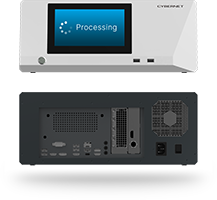Involved in everything from developing life-saving drugs to makeup, the life sciences with AI sector was $8 billion globally strong last year and looks to nearly quadruple that amount by 2029.
- What is AI in Life Sciences
- How is AI used in Life Sciences
- Benefits of AI in Life Sciences
- Challenges and Considerations in AI Use in the Life Sciences
What is AI in Life Sciences
Artificial intelligence, or AI, is a class of computer systems built to mimic human thinking and intelligence. These systems can analyze data, calculate outcomes, and comprehend language, to name a few. The life science industry is looking to use AI computers in various ways, such as drug design and discovery, supply chain management, and meeting regulatory requirements.
How is AI used in Life Sciences
Bioinformatics, cosmeceuticals, food processing, and other life science industries generate vast amounts of information. They are turning to artificial intelligence as the best means to handle such data to meet their goals and objectives.
Examples of how AI is being used include:
Drug discovery, design, and development
Developing new drugs and medications is a time-consuming, expensive, and tedious process with low chances of success. Pharmaceutical companies are using AI to resolve these issues, from sorting databases of molecules to base new drugs to repurposing current medications for new uses (for example, meds used to treat people with diabetes becoming more profitable weight-loss drugs).
Clinical trials
Testing new drugs and substances on living things is fraught with issues, especially when the test subjects are people. AI looks to address those issues, with companies using medical AI box PCs to sort blood test results and genetic makeup for the right candidates. Other programs come into play by following those candidates during clinical testing, which sometimes takes years.
Medical detection and diagnosis
Today’s tools for detecting disease, illness, and injury can overwhelm users with information. AI is being applied to sort through the results and make diagnoses, such as pointing out suspicious masses like breast cancer on an X-ray or CAT scan.
Benefits of AI in Life Sciences
The application of AI to the life sciences results in several benefits.
- Accelerate research by significantly speeding up data processing and analysis. This results in less time spent on activities from drug discovery to tedious (but essential) paperwork processing.
- Reduce costs through various means, from handling raw data from research to automating repetitive tasks. Less personnel and other resources would be needed for such costly tasks, who can then focus on more productive – and profitable – endeavors.
- Streamlining complex processes like supply chain management. New products and services can be manufactured more rapidly and brought to their target markets at a lower price.
- Improve diagnostic accuracy by detecting patterns and anomalies in medical scans like X-rays that providers may miss on their medical grade monitors. Such early detection can lead to more effective patient treatment at a lower cost.
- Greater precision and personalization due to AI’s ability to go through a patient’s genetic makeup, lifestyle, and environmental factors to create specific treatments for them. This approach results in lower healthcare costs as patients recover faster and have fewer side effects while using fewer essential resources like hospital beds.
Challenges and Considerations in AI Use in the Life Sciences
Despite the benefits, the life science sector has several concerns about AI technologies. Many revolve around the ethical use and application of content, whether fed into the AI or the generated results.
- Bias is AI content generated based on human prejudices found consciously or unconsciously in the training content (e.g., persons of Asian descent have a higher rate of accidents due to epicanthic folds in their eyes).
- Disinformation, or “hallucinations,” is AI-generated content that looks correct but is factually wrong.
- Environmental concerns are those dealing with AI’s increased power usage compared to conventional computer technology, which in turn increases carbon emissions by utilities.
- Ownership, as the name implies, is who owns the AI-generated content and in what capacity (e.g., “copyright”).
- Privacy issues concern the raw material used to train AIs, such as patient data, and the results, both of which are considered private.
Life science companies must address these and similar issues with AI for legal reasons, like HIPAA compliance, or to maintain the public’s trust in the technology.
Meet Life Sciences Challenges with Cybernet AI Computers
The numerous sectors of the life science industry aim to use artificial intelligence to fulfill their specific goals, whether processing data faster and more efficiently or developing specific medications and treatments for each individual patient. The challenges and concerns surrounding the new technology, like AI hallucinations, must be addressed to ensure the confidence and trust of lawmakers and the public.
Contact the team at Cybernet Manufacturing if you’re looking for computer AI solutions for your company’s life science section or department. Our team members will happily go over the PC lineup, from the GPU and CPUs used in processing to industry-specific features like medical grade and shock and vibration resistance. And as an Original Equipment and Design Manufacturer, we can further customize our products to meet your exact demands and specifications.


